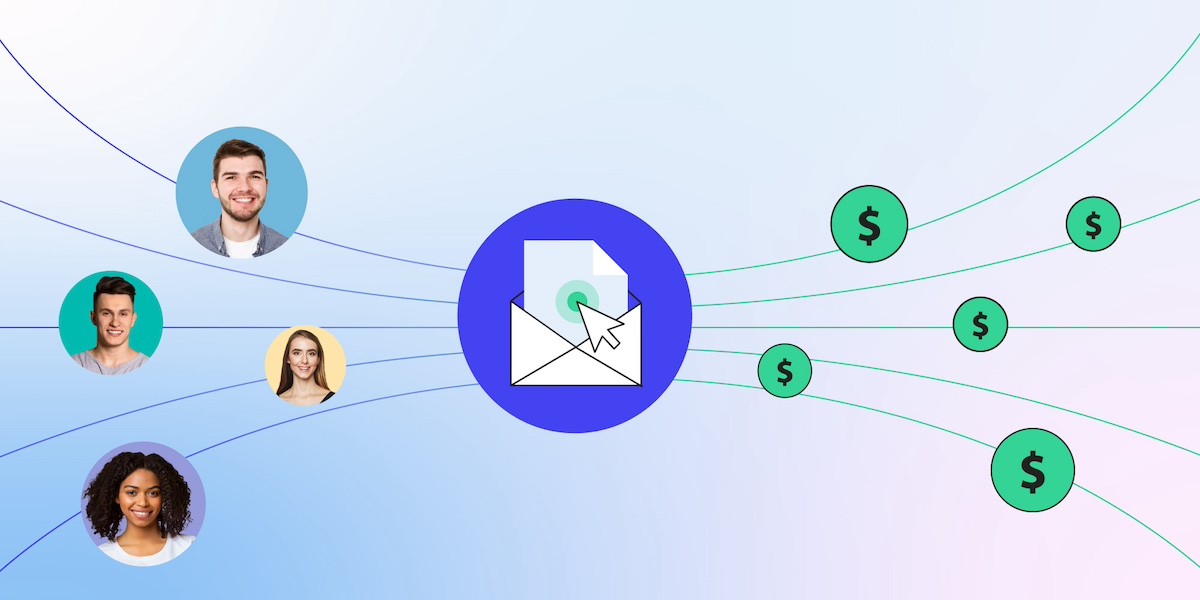Understanding your Ideal Customer Profile (ICP) is foundational to implementing successful b2b lead generation best practices. An ICP is a detailed description of the type of business that is most likely to benefit from your product or service. This goes beyond surface-level attributes like company size or industry. It includes understanding the decision-making process within that organization, the specific pain points they face, their buying behavior, and even the tools or systems they currently use. By honing in on these details, your marketing and sales teams can focus their time and resources on pursuing leads with the highest potential for conversion. Additionally, an accurate ICP ensures that your messaging and outreach efforts are relevant and resonant, thereby increasing response rates. Continuously refining your ICP based on feedback and data will further align your efforts with the market and maximize ROI.
Leverage Multi-Channel Outreach
Multi-channel outreach is one of the core b2b lead generation best practices because it diversifies your touchpoints and meets prospects where they are. Relying on a single communication method like email may limit engagement due to spam filters or simple inbox overload. By integrating platforms such as LinkedIn, cold calling, personalized videos, direct mail, and event networking, you create a cohesive presence across channels. Each platform plays a unique role: email is ideal for delivering in-depth information, LinkedIn fosters professional interaction, while calls create urgency and allow for real-time objection handling. Combining these channels ensures that your message is reinforced and builds familiarity with your brand. It also allows you to A/B test approaches across different audiences to determine which channels yield the highest conversion rates, making your strategy more adaptive and performance-driven.
Develop High-Quality Content for Each Stage of the Funnel
Creating valuable content that aligns with each stage of the buyer’s journey is critical in the realm of b2b lead generation best practices. Top-of-funnel (TOFU) content, such as blog posts, explainer videos, and infographics, is designed to attract attention and educate a broader audience. These should focus on industry trends, common challenges, and informational insights that resonate with your ICP. As prospects move into the middle-of-funnel (MOFU), offer webinars, case studies, comparison guides, and whitepapers that demonstrate your expertise and help them evaluate solutions. Bottom-of-funnel (BOFU) content like demos, testimonials, and product specs provide the final nudge to convert a lead into a customer. Personalization plays a vital role here—tailoring content to a prospect’s role or pain points shows you understand their needs. Companies that implement a structured content strategy aligned with funnel stages are more likely to generate high-quality leads that convert faster and remain loyal.
Implement Marketing Automation and CRM Tools
Marketing automation and CRM tools are indispensable when adopting b2b lead generation best practices at scale. Automation platforms such as HubSpot, Marketo, and Pardot help execute and manage large-scale email campaigns, segment audiences, schedule social media posts, and trigger workflows based on user behavior. This reduces manual effort while improving accuracy and consistency. Meanwhile, a robust CRM system like Salesforce or Zoho CRM centralizes lead data, tracking every interaction from first touch to deal close. It offers your sales team real-time insights into where each lead stands in the buying journey, enabling more timely and personalized follow-ups. Integrating both tools creates a seamless flow of information between marketing and sales teams, allowing for better alignment and performance tracking. These tools also support lead scoring models, ensuring that your teams focus their energy on the leads most likely to convert.
Utilize Data-Driven Decision Making
Adopting a data-driven approach is one of the most sustainable b2b lead generation best practices. With data, you move from assumptions to facts, allowing for smarter decision-making and continuous improvement. Monitor key performance indicators (KPIs) like cost per lead, conversion rate, email open and click-through rates, form abandonment rates, and lead quality scores. Analyze which campaigns generate the most engagement and which channels produce the most qualified leads. Use A/B testing to determine the effectiveness of different headlines, CTAs, and email sequences. This process ensures your lead generation tactics remain agile, relevant, and profitable. It also allows for effective budget allocation, channel prioritization, and audience refinement. Ultimately, a data-centric mindset ensures that every lead generation activity is justified by performance insights, leading to higher ROI and better sales alignment.
Offer Valuable Lead Magnets
Lead magnets are tools that capture a prospect’s contact information by offering something valuable in return. Examples include eBooks, checklists, free trials, calculators, assessments, and exclusive reports. The best lead magnets solve a specific problem or answer a critical question for your ICP. One of the overlooked b2b lead generation best practices is ensuring that your lead magnet is not only informative but also highly relevant and easy to consume. A downloadable asset that’s buried in complex language or demands excessive personal data will likely be ignored. Use compelling headlines, brief descriptions, and clean forms to maximize conversions. Once a lead downloads your magnet, follow up promptly with automated sequences to continue nurturing. A strong lead magnet strategy builds trust, establishes authority, and opens the door for deeper engagement.
Nurture Leads Through Targeted Email Campaigns

Lead nurturing is about building a relationship with prospects until they’re ready to buy. Through targeted email campaigns, you can stay top-of-mind and gradually guide leads toward conversion. Segmentation is essential: group your email lists by criteria such as job role, company size, location, behavior, and funnel stage. Create customized drip campaigns with messaging tailored to each segment’s needs and interests. According to b2b lead generation best practices, consistency and relevance are key. Share customer success stories, industry updates, and invitations to webinars or product tours. Use dynamic content blocks and personalized subject lines to boost engagement. Monitor analytics to refine timing and frequency. Lead nurturing should feel like a dialogue, not a broadcast—so make sure your emails encourage interaction and deliver continuous value.
Build Strategic Partnerships
Partnering with non-competing businesses that serve similar audiences is an often underutilized strategy in b2b lead generation best practices. Strategic alliances can give you access to new networks of pre-qualified leads without the high costs of paid advertising. Examples include co-branded webinars, joint case studies, referral programs, or sponsored content swaps. These collaborations not only extend your reach but also build credibility through association. Choose partners with complementary offerings and shared values to maximize synergy. Clearly define roles, responsibilities, and goals to ensure mutual benefit. When well-executed, partnership marketing can significantly shorten the sales cycle, as the leads come pre-warmed by their trust in your partner.
Use LinkedIn for Advanced Prospecting
LinkedIn remains one of the most effective platforms for B2B prospecting, especially when used for strategic engagement rather than just cold outreach. Utilize LinkedIn Sales Navigator to filter by job title, industry, location, and activity. Engage with prospects by commenting on their posts, joining relevant groups, and sharing thought leadership content. According to b2b lead generation best practices, building rapport before making an ask significantly increases your chances of a response. Create a series of personalized messages that add value—such as sharing a useful article or inviting them to a relevant event—before pitching your product. LinkedIn’s InMail feature also allows for direct communication with high-level decision-makers who might not respond to email. Track your outreach to refine targeting and identify what messaging resonates most.
Test and Optimize Continuously
Testing and optimization are ongoing processes central to b2b lead generation best practices. Even the best campaigns can be improved, and what works today might not work tomorrow. Continuously test subject lines, email content, landing page layouts, CTAs, ad creative, and even the timing of outreach. Use A/B and multivariate testing methods to gather actionable insights. Incorporate feedback from sales teams to understand why certain leads convert or stall. Regularly update your buyer personas and review your ICP to reflect market changes. Optimization also includes refining your lead scoring model to better identify which leads are truly sales-ready. The key is to build a feedback loop between marketing, sales, and customer success to ensure your lead generation engine evolves with the market and your business goals.
Conclusion
Incorporating b2b lead generation best practices into your strategy can be a game-changer for sustainable growth and competitive advantage. From understanding your ideal customer profile to leveraging technology, nurturing relationships, and using data to drive every decision, these practices form the backbone of high-performing lead generation systems. No single tactic guarantees success, but a well-orchestrated combination ensures that your pipeline remains full and healthy. As markets become more competitive and buyers more discerning, the companies that adapt, personalize, and innovate their lead generation efforts will be the ones that thrive. Stay committed to continuous learning, consistent value delivery, and strategic experimentation to keep your lead generation engine running strong and your revenue on a steady upward curve.
















